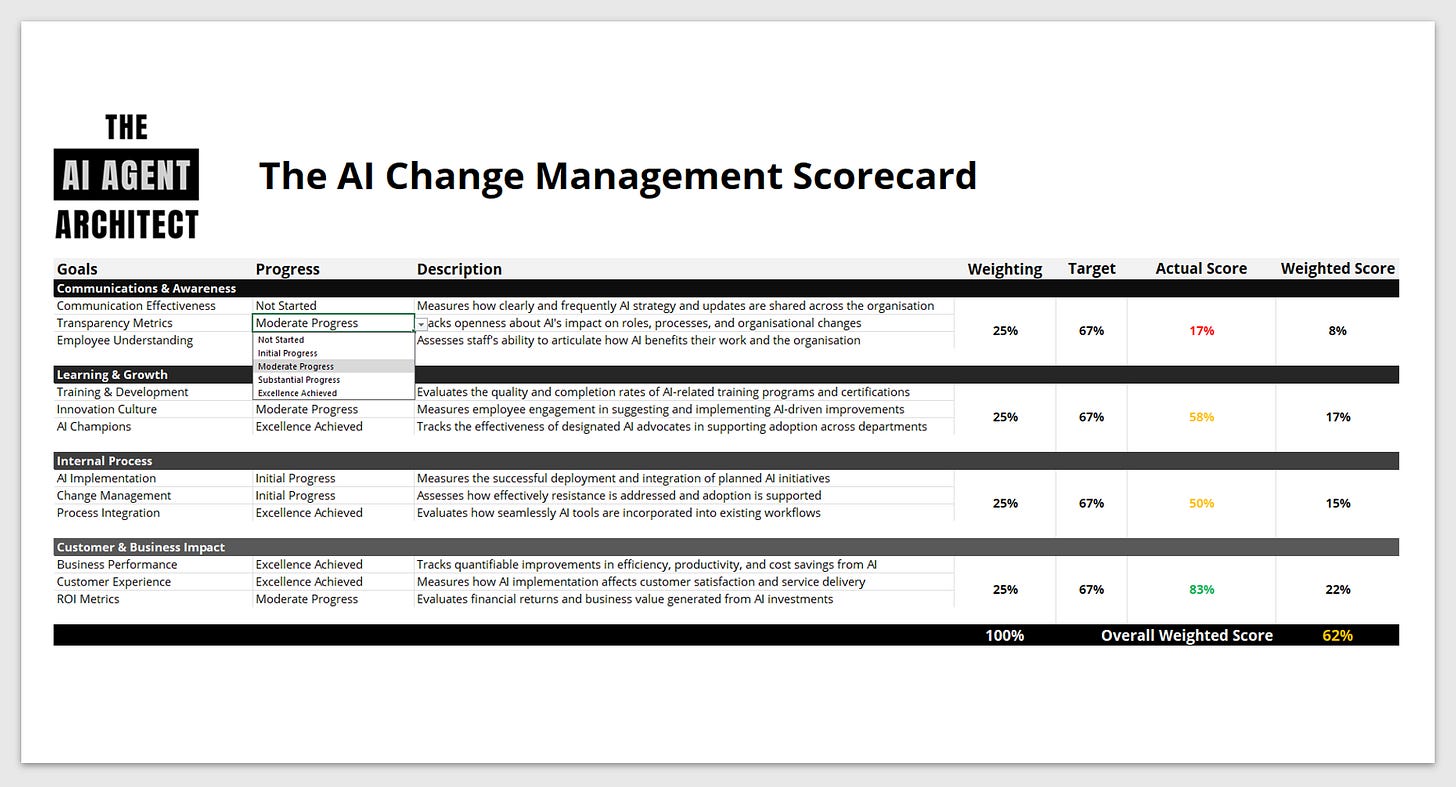Skipping SaaS: Why score carding helps quantum leap to adoptable agentic AI.
How smart executives can avoid the failed promise of AI in SaaS
Still buying SaaS while others are building intelligence
In 2024, Klarna replaced 700 agents with an internal AI system that now handles over 2.3 million customer interactions per month, resulting in annual savings of $40 million.
That wasn’t just automation. It was a reset.
Klarna didn’t buy another SaaS product. It built its intelligent infrastructure using agentic AI, tailored to its business model and culture.
“Yet why do other businesses still remain caught in a reflex with AI, unable to replicate Klarna’s business model?"
The reason is simple. New technology arrives, investors demand AI, and executives feel pressured to go shopping. On top of this, AI agents are hyped, showing promise, and so by default, executives enquire with a SaaS vendor.
More dashboards.
More vendor contracts.
Another layer between their people and their intelligence.
But leading executives are flipping the script. They’re starting with intent, scorecarding for readiness and asking how they want to codify workforce expertise, redesign workflows, and lead change, where AI agents support this.
Their goal is to build intelligence within their business, rather than licensing it back to a SaaS vendor to profit from it.
🎁 Get a FREE change management scorecard today, identify your business workflow readiness with agentic AI.
SaaS was a step, not a strategy
When SaaS commerce emerged, it became the “quick win” default model for enterprise technology.
For executives, it was the answer to:
lower costs.
accelerating deployment.
providing visibility into their customers.
Over time, businesses stopped growing their intelligence. Sales playbooks became a part of the Customer Relationship Management (CRM) field. Onboarding became dropdowns. Decision-making became reports.
“SaaS locks business knowledge into third-party platforms, outside the wall garden of its enterprise architecture and business models.”
And now, the same mistake is being repeated with the promise of AI agents.
Businesses say they’re “doing AI”, but what they’re really doing is feeding more of their operational data into external SaaS wrappers.
By renting their logic and AI technology from someone else, they continue to generate profits for SaaS companies, rather than for themselves.
Removing SaaS from the equation
The invention of agentic AI systems now provides businesses with the opportunity to disconnect from SaaS vendors or even consider migrating to them altogether.
If executives build agentic AI systems within the walls of their business data, they eliminate the end of SaaS dependency.
No more bloated UI.
No more expensive custom workflows.
Just agents trained on the way the business works.
Agentic AI replaces interface-heavy approaches, provides rule-based tooling driven by codified knowledge in memory, and reasoning capable of evolving within a business.
Building intelligence—not more vendor dependencies
Remember the scene in The Social Network when Eduardo lands the first ad deal? Zuckerberg isn’t impressed:
“You made a deal. Now we live on their terms.”
That’s what SaaS became—a dependency disguised as control.
Agentic AI breaks that dependency.
It enables businesses to shift from outsourcing intelligence to owning it, from working within someone else’s interface to building within their own data ecosystem.
Savvy executives today aren’t chasing SaaS platforms. They’re designing intelligent systems around their team’s expertise, and codifying expertise into repeatable, and reasoning-driven tools.
This enables agentic AI to provide:
Enrichment through real workforce interaction.
Contextualisation over time.
Ownership by the business, not the platform.
For the boardroom executives, this completely reframes the conversation about introducing AI into their business.
It’s no longer about asking:
"Which SaaS CRM should we license?"
It’s:
"Why pay for CRM seats when we can build an agentic system that remembers every interaction better than the SaaS vendor platform does?"
Despite the capability of today’s AI systems, most projects still fail. This is not due to technology, but due to business readiness.
The real bottleneck: not score carding change readiness
According to SIA Partners, 80% of AI failures are attributed to cultural or process issues, rather than technical ones. Only 42% of firms report a positive return on investment (ROI) from AI investments, and fewer than 12% say they’re ready to scale agentic AI systems.
From the fieldwork of Templonix—a framework for cost modelling and agent design—what’s working is the 3:1 Rule:
“For every dollar spent on AI development, leading businesses invest three dollars in change leadership.”
That means training, process redesign, governance, and trust-building must be treated as equally, or even more in fact, and not left as an afterthought.
Why? Any introduction of software, whether it's AI, agents, or a SaaS application, is not a plug-and-play feature. They are digital collaborators requiring human oversight. And collaboration requires structure.
Ready to leap, or just lurking on the edge?
By now, you’ve probably seen the pattern:
AI hype
urgent pilot
shallow adoption
quiet burial.
The tools aren’t broken. The operating model is.
So, how do you know if your business is genuinely ready to leap, not just launch?
The real test for business executives isn’t technical feasibility; it’s gauging operational absorbability. That means checking whether the culture of your business is built to integrate agentic systems, not just flirt with them.
And the best way to do that? A scorecard.

Scorecards aren’t fancy, but are brutally effective. Why? Because they serve as an assurance tool to quickly assess the risk of introducing an AI system design or determine if the business culture is ready.
In 90 seconds, it reveals whether the foundations are there in a business, or whether time will be wasted chasing tech that a business's workforce isn’t prepared to adopt.
💡 Pro tip: Don’t wait until post-pilot to fill this out. Do it before your first design sprint. Before your next vendor call. Before your CTO says, “We’re ready.”
Get started on your scorecard today….
…. because if you want agentic AI to be more than a feature, you’ll need to redesign the business environment it lives in to realise SaaS won’t save you.
Don’t just deploy intelligence—design for it.
Agentic AI is not another tech trend. It’s a transformation. It only creates value when it’s integrated into the fabric of the business.
If your business is still optimising SaaS dashboards, you may be preparing for a world that no longer exists. With an agentic AI infrastructure, there is no need for a dashboard. There is only memory, reasoning, and trust.
To recap:
SaaS was a step, not the endgame.
Agentic AI systems replace logic and interface with memory and autonomy.
The real barrier isn’t code. It’s culture.
The companies that win in this next era won’t just have better agents. They’ll have better environments for agents to learn, reason, and thrive with human oversight.
🎁 Want the workshop kit?
Here’s the Agent Signal recipe, so you can start with your team immediately.
Want the interactive Miro board we use in real client sessions?
Pop comment or send a chat, and we will upload it for you.
💬 Found this helpful?
Share your thoughts, ask questions, or challenge the thinking in the comments.
Thanks for 🔁 Restacking and sharing.






